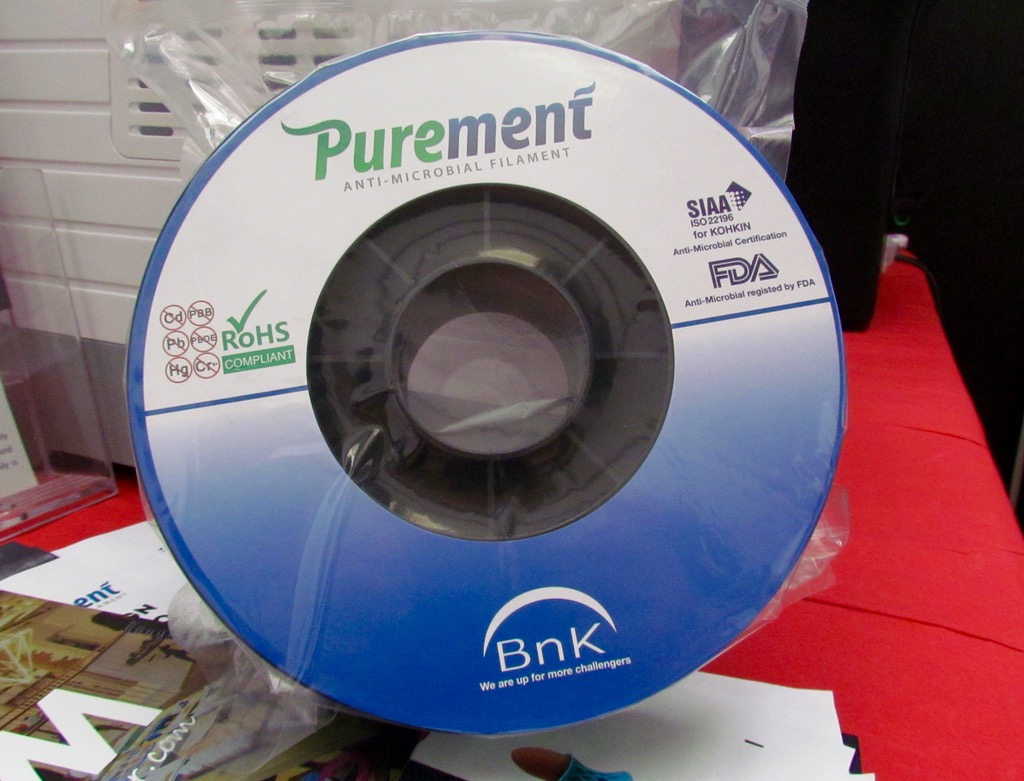
Korea-based BNK has announced an antibacterial 3D printer filament. Why?
The product is called, “Purement” and it is essentially PLA plastic, but with a twist. The material is designed to inhibit the growth of some types of common surface bacteria.
We’re told there is no particular chemical additive to do this, but instead the “material itself prevents growth” of some bacteria. Evidently it prevents “80-90%” of bacterial growth, and has received antibacterial certification by several agencies including ISO 22196 and the FDA in the US.
Of course, we were not told exactly how this is accomplished, as it is a corporate secret. But we’re assured that it can reduce occurrences of bacteria that cause, for example, “stomach ache”.
You might be wondering how BNK ended up producing such an unusual material. The answer is found in their corporate history, where they have, for many years, been producing germ-free plastic car interior components, such as dashboards.
But is this something useful? We think it actually could be. Consider that some 3D printed objects would be frequently handled, a key fob, for example, or a commonly used handle or lid. If these frequently touched objects had an ability to inhibit growth of bacteria, we’d all be better off by preventing the spread of disease.
Purement is definitely a niche product, and it is priced as such. For a kilo, you’ll pay £30 (USD$46), somewhat higher than commodity plastic filament. You’ll also have a choice of some 13 different colors that can be printed in almost any personal 3D printer.
For now the company sells Purement retail in Korea, but is seeking partners to market the product worldwide. So far they’ve hooked up with iMakr in London and New York, but they want to supply more distributors with their product.
Via BNK

